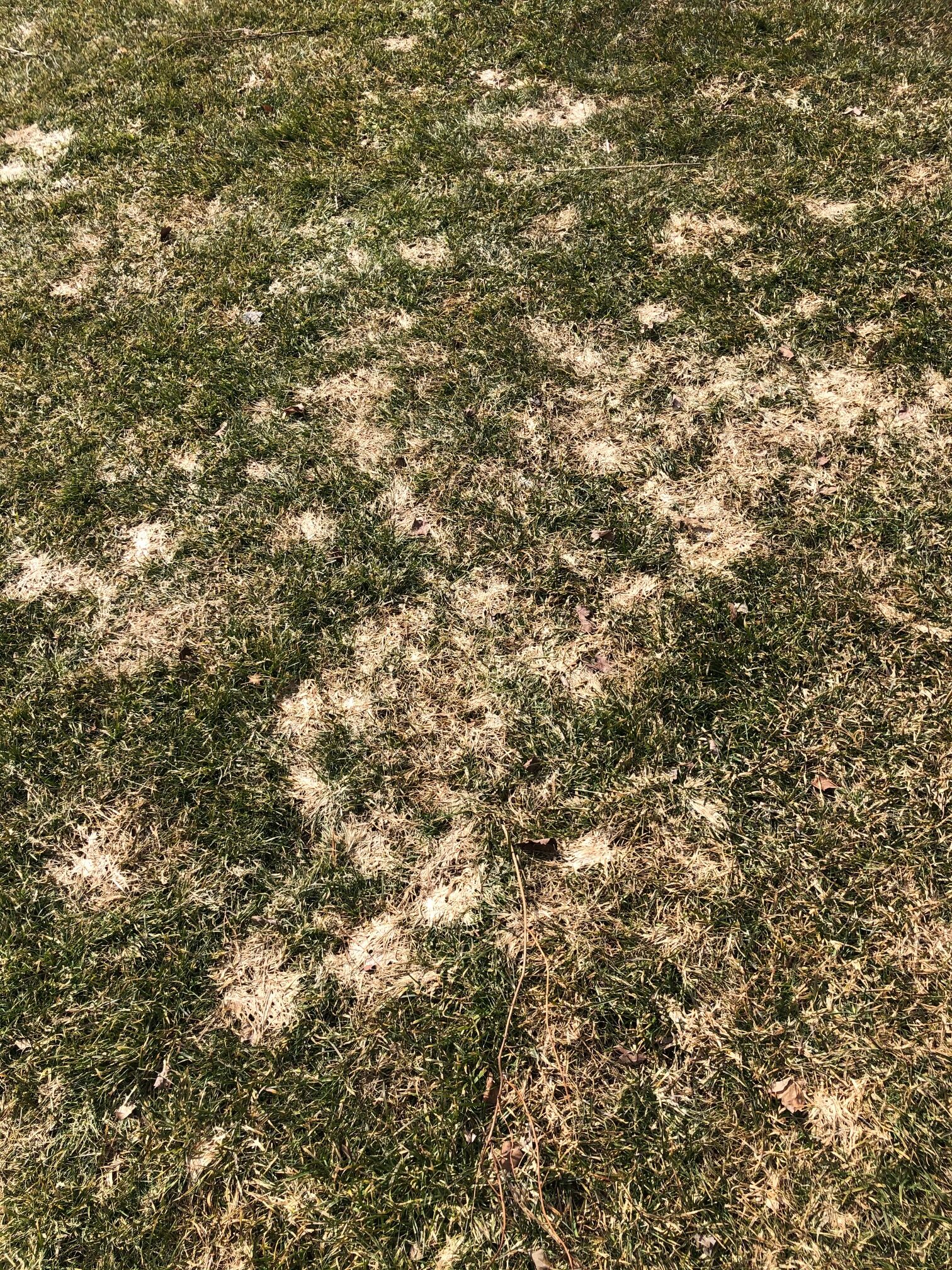LAWN PHIX PRO TIPS
I see a lot of snow mold every year. These circles of matted-down turf and mycelium appear on lawns every March and April after the harsh, cold, and snowy winters of New England.
- To prevent snow mold, my last mowing of the season is much lower – around 2.5 inches in height.
- As the lawn enters dormancy, it’s important not to have the grass fold over on top of itself.
- Snow mold doesn’t harm the turf, but it is unsightly and will last until the grass grows and greens up in the spring.
- Propiconazole-based products have excellent residual effects when applied preventatively in late November or December, with reapplication in February for added protection against spring outbreaks.
- Once the grass is thawed and dry, lightly rake the affected areas to separate the grass blades and promote air circulation to get rid of snow mold quickly.
As the cold days of winter are winding down, we can finally see our lawns with the continued melting snow. While this is almost always a great thing for us lawn care nuts, the melted snow can also reveal ugly snow mold.
Snow mold – pink snow mold and gray snow mold – is a common cool-season lawn disease that develops over cold winter with heavy snow and prolonged cover. Unlike summer diseases such as brown patch, snow mold is a fungus that thrives in colder weather.
Snow mold will spread in cool-season lawns when moisture is present and air circulation is poor. Large piles of snow – from snow shoveling or snow blowing – will be heavier, colder, and prolonged-time without airflow and circulation, and will be more susceptible to snow mold.
The turf with snow mold damage will be straw-colored, matted down and grass blades will have melded together – looking like dead grass. As the snow melts, the gray snow mold will be circular patches and in an irregular pattern.
The two types of snow mold are gray snow mold and pink snow mold. Gray snow mold (also called Typhula blight) will be more common in residential turfgrass and will mainly affect the grass blades. Pink snow mold (also called Microdochium nivale), however often impacts golf courses (bentgrass) and can kill the grass by spreading down to the crown and roots of the plant. While snow mold damage is unsightly in your lawn, most of the grass will grow out and recover in early spring as the weather warms up. But there are things you can do now to help treat the snow mold on your grass.
Page Contents [hide]
How to Treat Snow Mold in Lawns
As mentioned, gray snow mold and pink snow mold will continue to thrive when moisture is present and air circulation is poor. Prolonged snow cover will increase the likelihood of snow mold. The best snow mold treatment in your lawn is to improve air circulation by lightly raking the affected areas after the snow melts and the turf has dried. This will allow more air into the lawn and relieve the matted areas.
Wait until the snow cover has melted, and the ground has thawed and is dry. Raking frozen or wet grass can do more harm than good. Also use a light rake, like this one. Do not use a thatch rake or a stiff metal gardening rake on the snow mold. The idea is to gently rake and lightly fluff the grass up to improve air circulation through the turf to eliminate the mold. A light rake will also help break up the coalesced grass blades of the snow mold for quicker recovery.
Snow mold with visible cobwebs (mycelium) is a sign that the lawn disease is still active, and a fungicide may be needed to help stop the growth and spread of snow mold. The best lawn fungicides for snow mold is Propiconazole 14.3 at 3-4 ounces per 1,000 sq. ft.
Extreme cases may require lawn repairs, including seeding and patching dead areas. But as the temperatures outside get warmer, the grass will begin to grow, and most (if not all) of the snow mold should also grow out.
How to Prevent Snow Mold in Lawns
While you can’t control mother nature, you can help prevent snow mold in your turf. End-of-season lawn care is vital for early spring health and quick green-up. As you are preparing your lawn for winter:
- Drop your mower as low as possible without scalping. Shorter grass (2″ or under in height) tend to be less susceptible to snow mold
- Always use a clean, sharp mower blade
- Clean your lawn of debris, particularly leaves, before snowfall in the winter. This will promote airflow and prevent additional smothering
- Dethatch your lawn if you have excessive thatch (more than 1/2″ thatch layer)
- Be sure to feed your lawn fast-release nitrogen just before the ground freezes. This will provide plenty of food to survive the winter and green-up in the spring.
- Apply Propiconazole 14.3 lawn fungicide at 3-4 ounces per 1,000 sq. ft. before the first snowfall
We hope this helps you better understand snow mold in your residential cool-season lawns. Please leave a comment below if you’re seeing snow mold as bad as I am this year!
Snow Mold Images
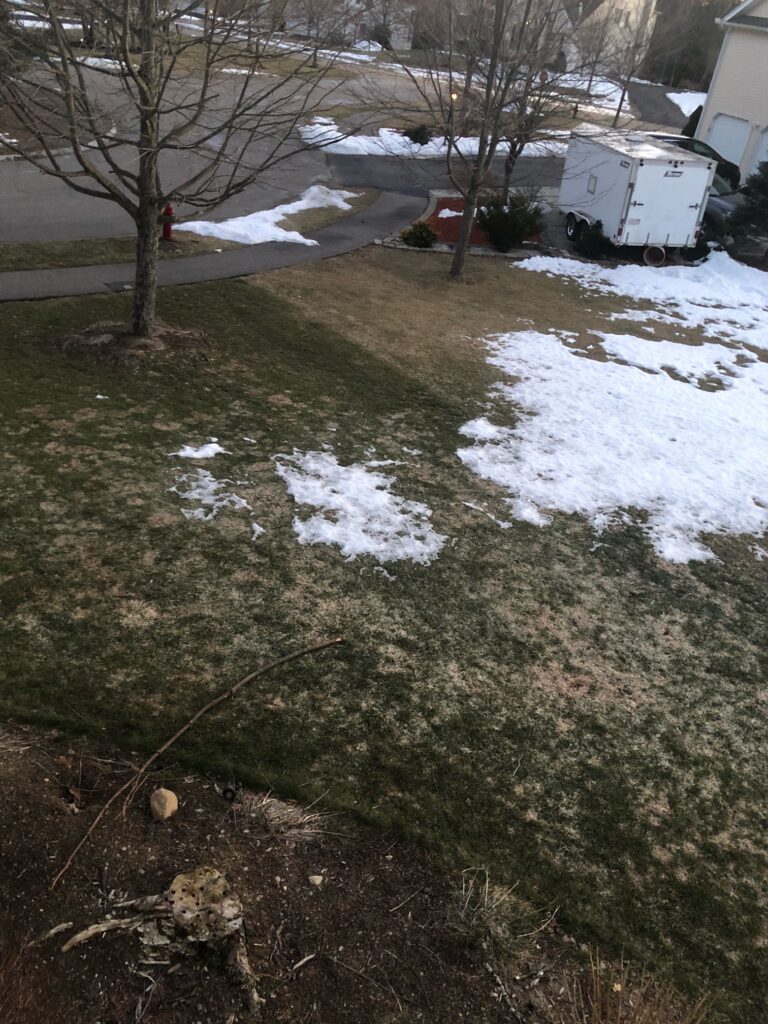

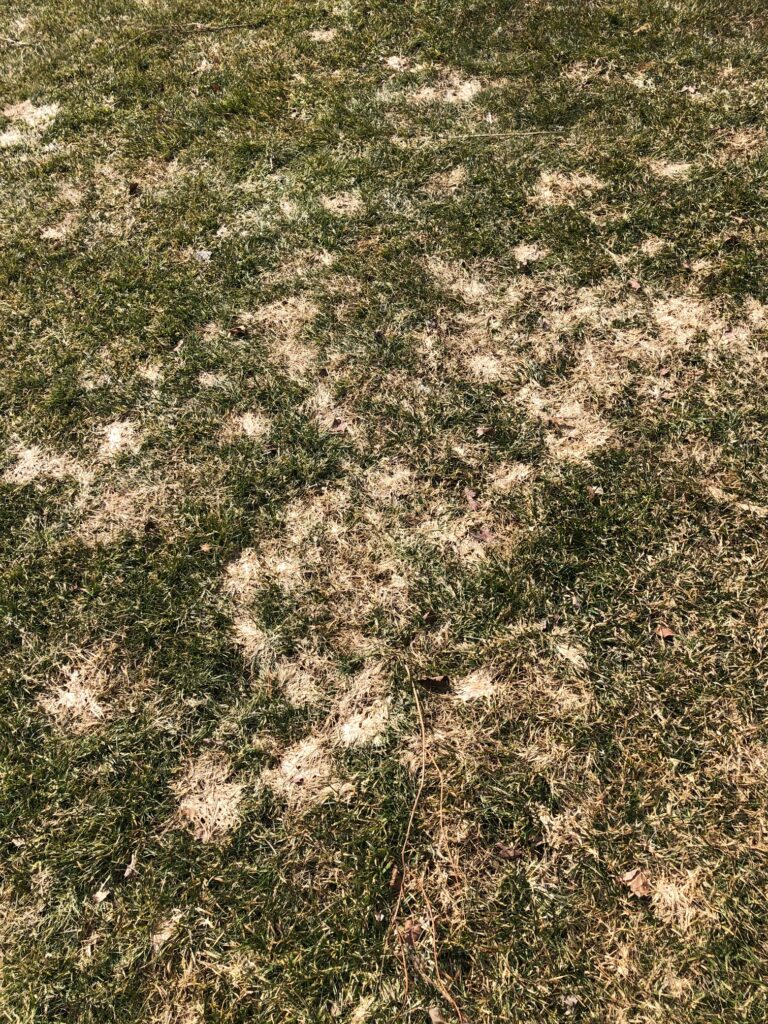
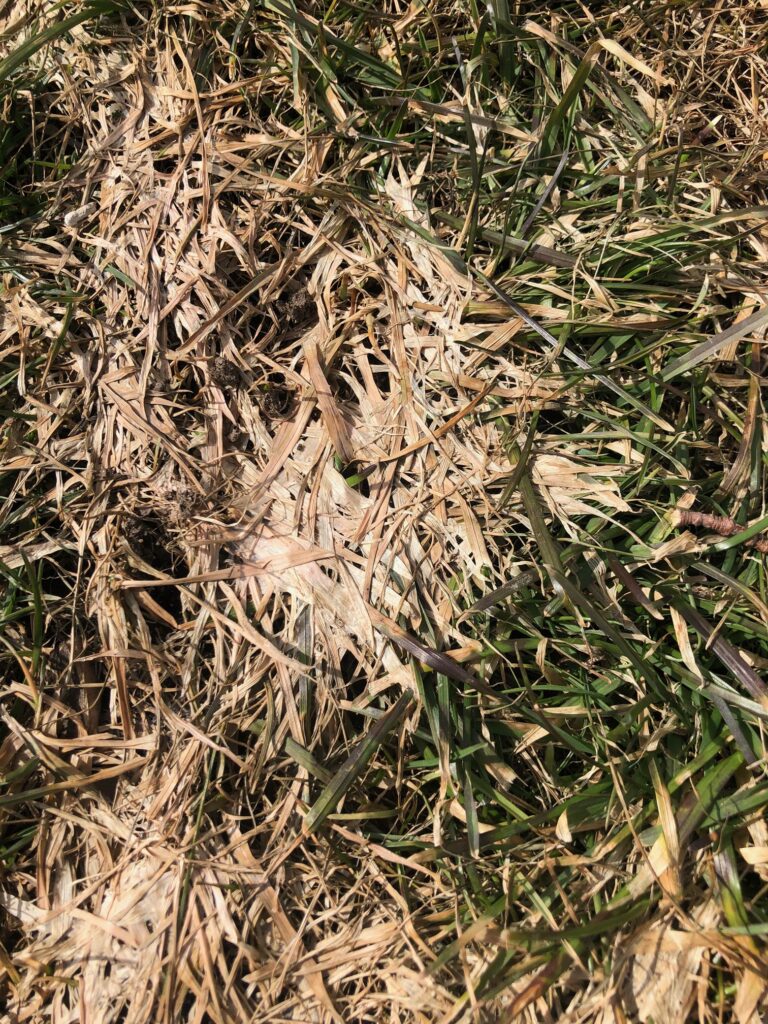
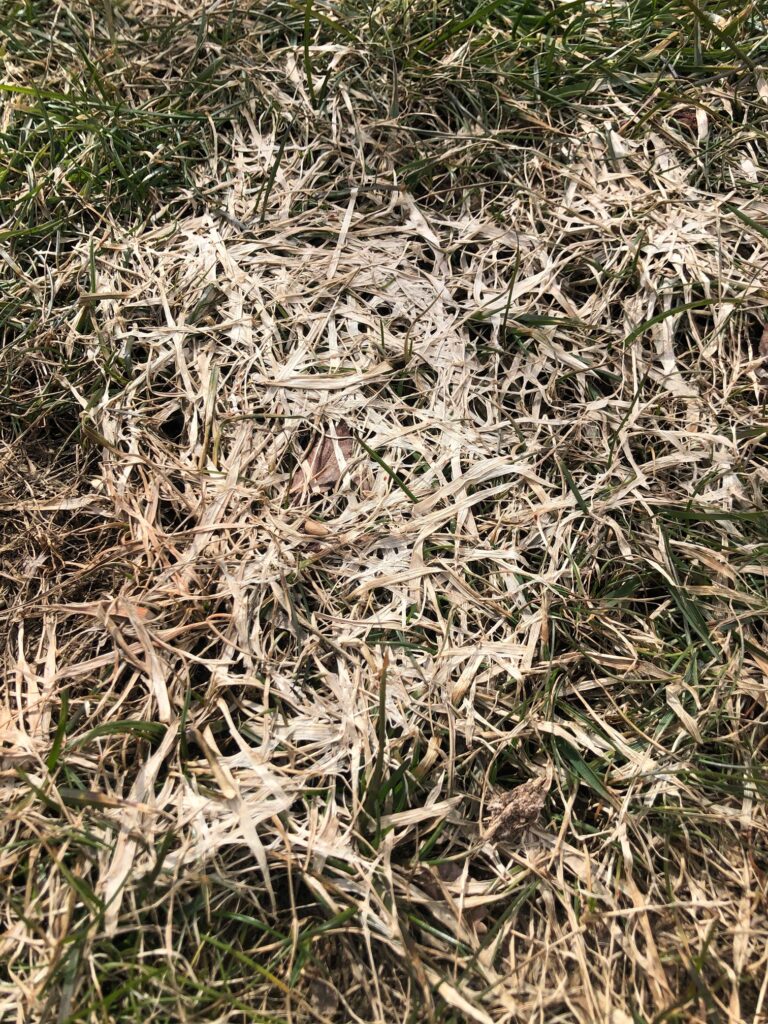
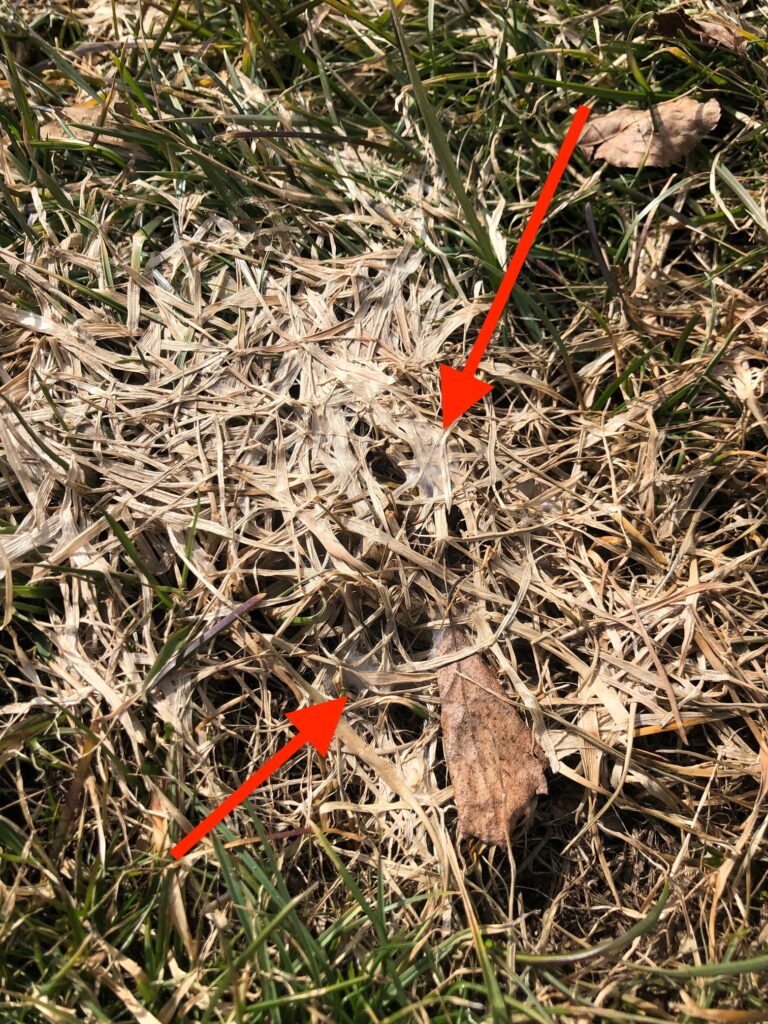
How do you get rid of snow mold?
You can get rid of snow mold (Typhula blight) by lightly raking the affected areas.
Will snow mold go away on its own?
Snow mold can go away on its own but is advised to implement basic lawn care steps. Use a light rake, a clean and sharp mower, and in some cases, a fungicide such as Propiconazole.
Is snow mold bad?
Generally, grey snow mold will grow out.
(note: higher levels of potassium can worsen snow mold – thanks Reel Low Canadian).

